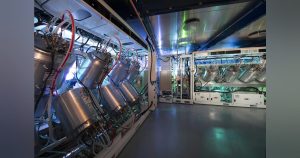Energy-Efficient Machine Learning: Revolutionizing Battlefield Intelligence
Military researchers are in urgent need of energy-efficient machine learning (ML) solutions that can operate effectively under the power constraints of today’s battlefields. The limited availability of battery and generator resources in these environments makes traditional ML systems too demanding for tactical deployments.

The Rise of Machine Learning on the Battlefield
As machine learning becomes increasingly integral to military operations—from drones and autonomous vehicles to predictive systems and command initiatives—it facilitates swift data-driven decisions, immediate threat detection, and logistics optimization. However, the vast energy requirements of these processes pose significant challenges in remote deployments where power sources are scarce.
Why Energy Efficiency is Critical
In modern warfare, devices must process data in real-time, coordinating and adapting to new threats autonomously. This requires operations to detach from the energy-abundant cloud and rely on austere battlefield power sources. Key applications of ML, like rapid decision-making, enhanced situational awareness, predictive maintenance, and electronic warfare, all confront energy limitations as a significant hurdle.
Introducing DARPA’s ML2P Program
To tackle these challenges, DARPA has initiated the Mapping Machine Learning to Physics (ML2P) program, aiming to develop ML models and hardware that can dynamically adjust to energy constraints. This initiative seeks to embed ‘energy awareness’ within algorithms and draw inspiration from platforms like drones that maximize efficiency under power limits.
The Strategic Imperative of Efficient Machine Learning
The absence of energy-aware ML restricts military capabilities; in theaters like Ukraine and the Indo-Pacific, units often operate without stable recharging infrastructure. AI-driven edge computing, which performs data processing locally, depends on its ability to conserve energy.
Events such as DARPA’s ML2P briefing invite engineers and scientists to contribute to developing SWaP-optimized solutions, emphasizing innovations that balance performance with energy efficiency.
The Path Ahead for Energy-Efficient ML
Future developments in ML will focus on quantum machine learning, generative AI, and continuous adaptation—all requiring breakthroughs in energy conservation to remain viable in military contexts. Collaboration across sectors will be essential in overcoming these challenges.
The race for energy-efficient ML is vital not only for academic advancement but as a pivotal factor in future victories and force protection. Those mastering the equilibrium between intelligence and endurance will gain the upper hand.













